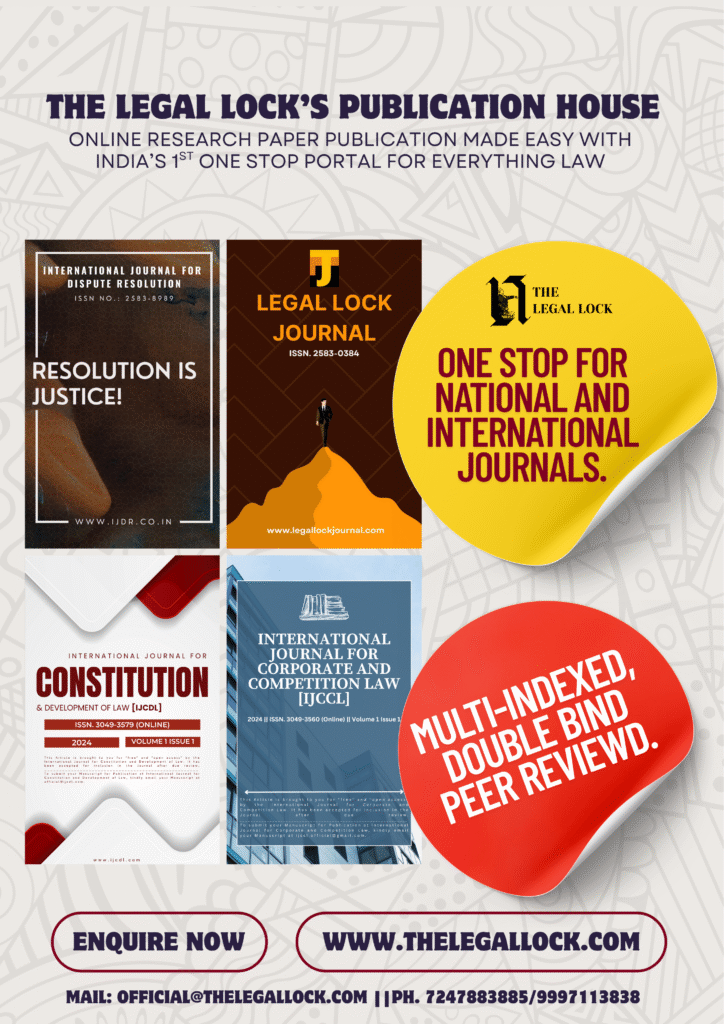Criminal Intimidation, Insult, Annoyance, and Defamation under BNS

INTRODUCTION
Criminal intimidation, insult, annoyance, and defamation are offences that protect individuals from harm to their reputation, sense of security, and peace of mind. These offences aim to prevent psychological harm and maintain social harmony.
- Criminal Intimidation: This involves threatening someone with injury to their person, reputation, or property to instill fear or compel them to act against their will. It includes verbal, written, or gestural threats intended to cause alarm.
- Insult and Annoyance: These offences involve actions or words meant to offend or irritate someone. Insults target an individual’s dignity or character, while acts of annoyance disrupt a person’s peace of mind through persistent harassment or unwelcome behavior.
- Defamation: This refers to making false statements about someone that harm their reputation. Defamation can be classified as libel (written) or slander (spoken). The statement must be false, communicated to a third party, and damage the person’s reputation.
Section :351. Criminal Intimidation
This provision defines and penalizes the act of criminal intimidation, which involves threatening someone to induce fear or compel them to act in a certain way.
Provision Breakdown under Criminal Intimidation:
- Threatening Another Person:
- Whoever threatens: This applies to any individual who makes a threat.
- By any means: The threat can be communicated through any method, whether verbal, written, or implied.
- With any injury to his person, reputation, or property: The threat may involve harm to the individual’s body, damage to their reputation, or destruction of their property.
- Intent:
- With intent to cause alarm: The person making the threat aims to create fear or anxiety in the individual being threatened.
- Or to cause that person to do any act which he is not legally bound to do: The threat is intended to make the person take action that they are not legally required to perform.
- Or to omit to do any act which that person is legally entitled to do: Alternatively, the threat aims to make the person refrain from performing an act that they are legally entitled to carry out.
- Explanation:
- Threat to injure the reputation of any deceased person: This includes threats that involve damaging the reputation of someone who has passed away, provided the person threatened has a vested interest in that deceased person’s reputation.
Illustration:
Scenario:
- Threat: A threatens B that if B does not transfer ownership of a valuable property to A, A will publicly accuse B of a serious crime, thereby damaging B’s reputation and causing harm to B’s business and personal relationships.
- Intent: A’s threat is aimed at causing B significant anxiety and distress. A wants B to transfer the property, which B is not legally obligated to do, or to prevent B from taking any legal actions they are entitled to, such as defending their reputation or seeking legal redress.
Application:
- Criminal Intimidation: A’s threat constitutes criminal intimidation because it seeks to make B act against their will or omit actions they have a right to undertake by instilling fear of harm to their reputation or property. The threat is used as leverage to coerce B into compliance.
Romesh Chandra Arora v. State
In the leading case of “Romesh Chandra Arora v. State” ❲1960❳. The Court concluded that criminal intimidation is said to be committed not only when a threat has been imposed but also when that threat causes a mere warning to an individual.
Nand Kishore v. Emperor
“Nand Kishore v. Emperor” (1927), a butcher was threatened by some people that if he engaged in the trading of beef, he would be sent to prison, and it would be difficult for him to live in society. During that time, the trading of beef was legal. Therefore, the Allahabad High Court ruled that this threat would be construed as criminal intimidation.
Shri Vasant Waman Pradhan v. Dattatraya Vithal Salvi
The Bombay High Court declared in the case of “Shri Vasant Waman Pradhan v. Dattatraya Vithal Salvi” (2004) that mens rea is the core of criminal intimidation. Mens rea refers to malafide intentions to do something. The intention must be determined based on the facts and situations associated with the incident.
352: Intentional insult with intent to provoke breach of peace.
This provision addresses the crime of intentionally insulting someone with the aim of provoking a reaction that could disrupt public peace or lead to further offenses.
-
Intentional Insult:
- If a person deliberately insults someone in a way that they know or expect will provoke the other person, they are committing an offense.
-
Objective of Provocation:
- The intention behind the insult must be to cause the other person to react aggressively or to commit a crime. The goal is to disturb public order or incite illegal behavior.
-
Penalties:
- If found guilty, the person can face:
- Imprisonment for up to two years, or
- A fine, or
- Both imprisonment and a fine.
- If found guilty, the person can face:
Illustration:
Suppose person A deliberately makes derogatory remarks about person B in public, knowing B might react violently or unlawfully. If A insults B to provoke a confrontation or incite violence, A could face up to two years in prison. A may also be punished with a fine or both imprisonment and a fine.
This provision prevents individuals from using insults or provocation to incite violence or disorder. It ensures public peace and reduces criminal escalations.
Section 354: Act caused by inducing person to believe that he will be rendered an object of Divine displeasure.
This provision stipulates that any individual who intentionally causes or attempts to cause another person to perform an act. The act must be one they have no legal obligation to perform. It also applies if they are forced to refrain from a legally entitled action. This happens by inducing or attempting to induce them to believe in divine displeasure. The belief must involve them or someone they care about facing divine displeasure for their actions or omissions. Such individuals shall be subject to legal penalties.
The penalties include imprisonment of either description for a term extending to one year, or a fine, or both. This provision aims to penalize coercion using religious or spiritual threats. It prevents unlawful influence on legal rights or duties through fear of divine consequences.
Section 356: DEFAMATION
This provision defines the offense of defamation and sets out the circumstances under which an imputation may be considered defamatory.
Definition of Defamation:
Defamation occurs when an individual makes or publishes an imputation about another person through words, signs, or representations. The imputation must be spoken, written, or visibly represented with intent to harm the person’s reputation. It also applies if the person has knowledge or reasonable belief that it will harm the reputation.
An imputation lowering a person’s moral or intellectual character constitutes defamation. It also includes tarnishing their caste, profession, or credit. Defamation occurs if an imputation presents a person’s body in a loathsome or disgraceful state.
Explanations:
Explanation 1: Defamation can extend to imputation against deceased persons if it harms their reputation when alive and is intended to hurt the feelings of their relatives.
Explanation 2: Imputation against a company, association, or group can also be defamatory.
Explanation 3: Imputations made in an alternative form or expressed ironically can still be considered defamatory.
Explanation 4: An imputation must harm a person’s reputation by directly or indirectly diminishing their moral or intellectual standing, caste, profession, or public image.
Exceptions:
Exception 1:
Truthful imputations made for the public good are not considered defamation. Determining whether it serves the public good is a factual question.
Exception 2: Opinions expressed in good faith about the conduct of a public servant concerning their public duties are not defamatory.
Exception 3: Opinions in good faith about a person’s conduct on public issues are not defamatory.
Exception 4: Reporting substantially true proceedings of a court or its results is not defamatory. This includes inquiries held by magistrates or other officers.
Exception 5: Opinions expressed in good faith regarding the merits of a decided case or the conduct of individuals involved in such cases are not defamatory.
Exception 6: Criticism of any performance submitted to public judgment is not defamation, provided it relates to the performance itself.
Exception 7: Censures made in good faith by a person with lawful authority over another concerning matters within that authority are not defamatory.
Exception 8: Accusations made in good faith to those with lawful authority over the accused are not defamatory.
Exception 9: Imputations made in good faith for the protection of personal, other’s interests, or public good are not defamatory.
Exception 10: Conveying a caution in good faith to protect the interests of the recipient or others, or for public good, is not defamatory.
Penalties:
The punishment for defamation is simple imprisonment for up to two years, a fine, or both. For those who print or engrave defamatory material with knowledge or good reason to believe it is defamatory, the same penalties apply.
ILLUSTRATION:
(A) If person A publicly states, “Z is such a dishonest individual; he never returned the money he borrowed,” intending to imply that Z is a thief, this statement could be defamatory unless it falls within one of the exceptions.
(B) If person A sarcastically says, “Oh, I’m sure Z is the most reliable person to manage our funds,” intending to imply that Z is actually unreliable, this could be defamatory.
Jawaharlal Darda v. Manoharrao Ganpatrao Kapiskar
In the case of “Jawaharlal Darda v. Manoharrao Ganpatrao Kapiskar” (1998), a publisher, who published a statement against a minister regarding the misappropriation of government money, was held not guilty of the offence of defamation.
Ram Jethmalani v. Subramanian Swamy
“Ram Jethmalani v. Subramanian Swamy” (2006), the Delhi High Court ruled that Swamy’s claims as to the fact that Ram Jethmalani had received funding from a prohibited organisation to support Tamil Nadu’s Chief Minister in the Rajiv Gandhi assassination case were defamatory.
Mahendra Ram v. Harnandan Prasad
In the case of “Mahendra Ram v. Harnandan Prasad” (1958), the defendant was found responsible for the letter that he sent to the plaintiff in Urdu while being aware that the plaintiff was not versed in Urdu. The notice was therefore read by one individual named Kurban Ali in presence of several other persons. The notice contained defamatory and false allegations against the plaintiff which had resulted in causing pain thereby leading to a substantial case of defamation as the assertions were made public.
-
Breach of contract to attend on and supply wants of helpless person.
This legal provision addresses the failure of an individual bound by a lawful contract to care for or provide necessary services to a person who, due to reasons such as age, mental incapacity, illness, or physical weakness, is unable to look after themselves.
Key Points:
- Scope of Responsibility:
-
-
The provision applies to individuals with a lawful contract to attend to or supply another person’s needs. This includes caretakers, guardians, or service providers with a contractual duty to ensure someone’s well-being. It applies when the person cannot care for themselves due to youth, mental unsoundness, illness, or physical weakness.
-
- Voluntary Omission:
-
- The offense occurs when such individuals deliberately fail to fulfill their contractual duties. The failure must be voluntary, meaning it was not due to an external impediment but rather a willful neglect or omission of duty.
- Punishment:
-
- The penalties for this offense can include imprisonment for up to three months, a fine up to five thousand rupees, or both, depending on the circumstances and severity of the omission.
Illustration:
Situation: Person A is a nurse hired under a lawful contract to care for Person B, an elderly individual who is bedridden and unable to perform daily tasks due to severe physical weakness.
Offense: Person A, instead of attending to Person B’s needs as per the contract, deliberately neglects their duties by failing to provide necessary care, such as administering medication or helping with basic hygiene.
Legal Consequence: Person A could face imprisonment for up to three months, a fine up to five thousand rupees, or both, for this voluntary omission in their contractual duties.
CONCLUSION
Criminal intimidation, insult, annoyance, and defamation affect how individuals interact and communicate, with significant legal implications. Criminal intimidation and defamation provide legal protections against harmful actions or statements that damage reputation or cause fear. Insults and annoyance can lead to legal issues if they escalate into harassment or emotional distress. Understanding these concepts helps in navigating legal boundaries and ensuring respectful communication in society. Legal remedies exist for victims, emphasizing the need to respect others’ rights and reputations in all interactions.







